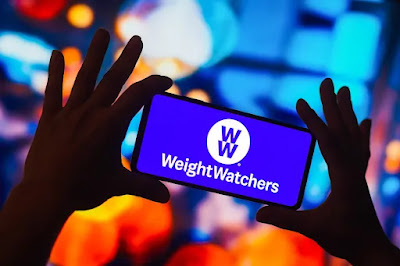 Today, December 21, is the shortest day of the year in the Northern Hemisphere, which makes it the longest day of the year for places below the equator. The winter solstice occurs at 10:27 PM ET. Some countries celebrate this day:
Today, December 21, is the shortest day of the year in the Northern Hemisphere, which makes it the longest day of the year for places below the equator. The winter solstice occurs at 10:27 PM ET. Some countries celebrate this day:- Iranians celebrate Yalda, meaning birth or rebirth. Something to do with the sun god Mithra. Families gather to eat, drink, read poetry through the night and welcome the sunrise.
- It's called Dongzhi in China, meaning winter's arrival. Again, family time, with a hearty meal of glutinous rice balls or dumplings.
- The Native American Hopi tribe in the Southwest has a Soyal ceremony lasting up to 16 days. A time for prayer and purification.
- Japan has Toji, a custom involving taking a hot bath with yuzu, a citrus fruit, and eating kabocha, winter squash, plus foods that contain the "n" sound, like udon. Why? Brings good luck.
FAT? SKINNY? NORMAL? APPARENTLY, NO EFFECT ON LONGEVITY.
By long-established Body-Mass Index standards.- If your BMI is less than 18.5, it falls within the underweight range.
- If your BMI is 18.5 to 24.9, it falls within the Healthy Weight range.
- If your BMI is 25.0 to 29.9, it falls within the overweight range.
- If your BMI is 30.0 or higher, it falls within the obese range.
- Then came the pandemic and the food served at 15 Craigside allowed me to, without any real effort--basically reducing carbohydrates and sugars--switched to soup and salad lunches. Maybe more than that, I stopped going to Zippy's and Rainbow Drive-In for bento lunches. I dropped to 153 pounds, lowering my BMI to below 23, or squarely in the middle of normal.
- However in my advancing age, knee bent and back somewhat curved, I now am only 5'7" tall, meaning that my BMI is 24, at the high side of normal.
- Not to worry for two reasons. I want to be exactly where I am for, being elderly, am advised to have added body resources in case of serious ailments. And really, I'm still 5'9" tall, so all is well even if I zoom up to 160, which I was after I came back from my Japan trip earlier this month. At 5'9", the BMI today is between 23 and 24. Most of the increase, it turned out was water.
- In 1988 she lost 67 pounds with a liquid diet.
- In 1992 she reached 237 pounds.
- In 2019 she said she was diagnosed with pre-diabetes and WeightWatchers helped her lose 42 pounds while getting her blood sugar and pressure back into normal ranges.
- She is today, at 69, 7 pounds away from her goal of 160 pounds, and feeling more vital and vibrant about life.
I'm going to say, as somebody who was very humbled to take this role — because WeightWatchers also worked for me — yes, that advice was wrong. Because we said it was choice, not chance. And the truth is that this is a chronic condition. And ultimately, for every one person that we helped, there was one person who our program did not work for because they were dealing with a chronic relapsing condition, with biology and genetics and environmental underpinnings. So, in order for us to reintroduce ourselves, we need to acknowledge the part that we had in the past.
- Ozempic and Wegovy (all Semiglutide).
- They mimic the hormones the body releases when a person eats food by making you feel full sooner.
- Regulates appetite, and needs to be taken as long as you want to lose weight, or later, to maintain that lower weight.
- Novo Nordisk sells Ozempic to treat type 2 diabetes and prevent major cardiovascular problems, Wegovy for chronic weight management.
- Each box of Ozempic and Wegovy comes with NovaFine Plus needles.
- Ozempic was approved in 2017 and Wegovy in 2021.
- Controls glucagon-like-peptide-1 (GLP-1).
- Here are 8 reasons to be cautious about using these pills, a few of them include cost, gastrointestinal side effects and the simple fact that you lose fat in the face, and therefore begin to look older.
- For those with needle phobia, you can try Rybelsus in tablet form. Was approved by the FDA for Type 2 diabetes in 2019. A 5-pound loss for a 196 pound person after six months.
- Good luck getting your health plan to cover all costs. Could cost $15,000/year. Note that only rich people like Elon Musk talks about how great this is.
- Last month, the FDA approved Zepbound (tirzepatide) for the obese, with the usual directions: watch your diet and increase physical activity. Eli Lilly sells Mounjaro as a diabetes drug, also a Tirzepatide, which activates two receptors at the same time, thus called a dual-agonist.
- They both control GLP-1 and and glucose-dependent insulinotropic polypeptide (GIP).
- Mounjaro was approved in 2022.
- Clinical trials have been stunning.
- Using the higher dose, 15 milligrams, people lost as much as 21% of their body weight.
- Diabetes symptoms were also were kept in check.
- Without insurance, costs $900-$1,400/month, or an average of around $14,000/year.
- How painful are those shots? About the same as other injections.
- Mounjaro patients lost more weight than those on Wegovy, but you need to take 10-15 mg/week of the former, and only 2.4 mg/week of the latter.
- Note that Wegovy and Zepbound are approved by the FDA for people with obesity, while Ozempic and Mounjaro are supposedly only approved to treat Type 2 diabetes.
- All this is so new that there is no knowledge about long-term implications.
- Remember the Atkins protein diet in the early 2000's? Originally developed by cardiologist Robert Atkins, its popularity has gone up and down and up and down since. They are now up to Atkins 20: A Low Carb Ketogenic Diet. This diet changed the marketplace. Pasta makers and companies like Krispy Kreme lost revenues, while the maker of Twinkies filed for bankruptcy.
- For these new weight drugs? Supermarkets and restaurants report of lowering sales. Be on top of long-term effects. Those who weekly inject these drugs will become another Oprah if they quit.
- Thus, watch for a weight-loss equivalent in pill form.
- Follow the stock value of Eli Lilly, for they have orforglipron, which has not yet been approved, and something called retatrutide following. Novo Nordisk and Pfizer might actually beat Eli Lilly for approval, and they are all oral versions of GLP-1s to mimic appetite suppression.
- Eli Lilly's two tests of a pill/day resulted in an average weight loss of 14.7% after 36 weeks.
- Novo Nordisk's daily pill saw an average weight loss of 15.1% after 68 weeks.
- Note that Eli Lilly's injected tirzepatide produced a 22% weight loss after 72 weeks.
- In any case, if these pills cost around the same as injections, will it be worth it? Maybe you should try willpower.
-























Comments
Post a Comment